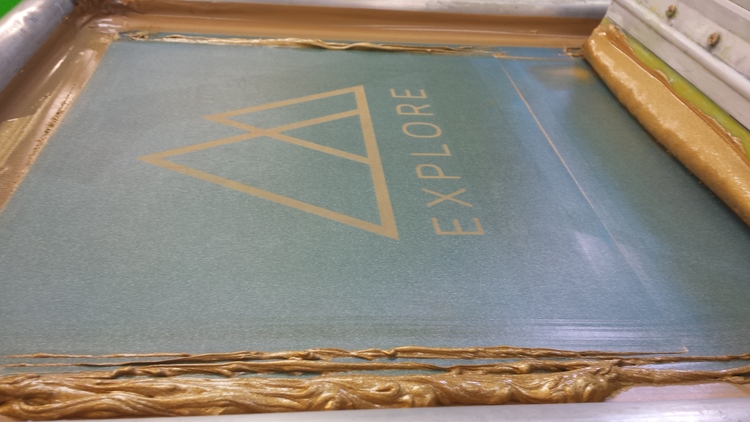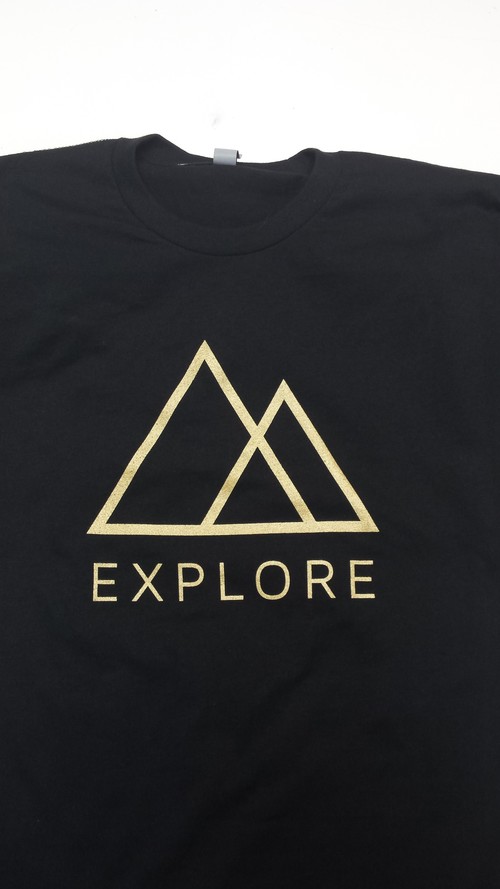What exactly is screen printing?
Screen printing has been around for centuries, and the amazing part is that the process hasn’t changed much since its earliest origins. It owes its longevity to its simplicity and versatility. You can find example of screen printing in all industries, from screen printed conductive metal on circuit boards and computer parts, CD labels, skate board decks, posters, art, and of course T-shirt and Garment printing!
Screen printing is achieved by creating a stencil on a film of fine mesh. Then a squeegee is used to press ink through the stenciled mesh in an even layer onto a substrate (shirt/paper). Every different color is a different screen. Screen printing hasn’t changed much but the tools and equipment have been advancing since the beginning. Screens aren’t made with silk anymore, squeegees come in all sorts of varieties of rubbers, and presses range from simple table hinge clamps to enormous 50 station automatic presses.
What is the process from start to finish?
After we establish a connection with the customer we will either have them fill out a price estimate form on our website or take the information in person at the shop. It is often best to look at the website form before coming into the shop to make sure you have all the information necessary to get a quote and place an order.
Once we have necessary information we will issue a price estimate that reflects the information provided. If the customer wishes to continue and place an order a 50% down-payment is required. After the down payment the garment blanks will be ordered.
The job won’t be put onto the print schedule until the artwork is finalized and approved. Once that happens the artwork is passed to the screen department.
In the screen department they take the customers artwork and burn it on emulsion coated screens. In this process a screen tech will image the artwork on a screen(essentially using a piece of equipment called a CTS “computer to screen” that prints the stencil with solid black ink directly on the emulsion coated screen.) Then the screen tech will expose the screen with Ultra-Violet light. The emulsion we have coated the screen with is a photosensitive material that will harden and no longer be water soluble when exposed to UV light. The areas of the screen that were covered with black ink by the CTS will not receive any UV light and remain water soluble. The screen tech then takes the exposed screen and washes away the areas that were not exposed to UV light and this makes the stencil for the ink to pas through the screen. This process is repeated for each color of a design. The screens are set aside to dry for use by the printers.
When the garments arrive a production specialist will unbox the Tees and the printers will then take your screens and set them up as per colors and placements listed in your artwork approval. To do so they prep the screen and put it on one of our two automatic presses. Though the presses are automatic there is still a great deal of human interaction. A printer/press operator will decide in what order the color will best be printed and if any flash curing is required in between colors. Then they will load the screens on the press along with squeegees and ink, and proceed to register the colors to line up together. After all colors have been aligned the job is ready to be printed. A press operator will load each shirt for the desired print placement. The shirts are loaded onto platens that rotates around the press, traveling to each printed color. Then a press operator will remove each shirt and place it on the dryer belt. In the dryer the ink is heat cured into every shirt that is printed. From there a production specialist will stack the shirts by size and double check the quantities to make sure they order is complete.
Then the garments are boxed, and the customer is contacted. The remaining balance is due upon receiving the printed garments picked up unless otherwise stated.
For more frequently asked questions, visit our FAQ page. Or, learn more about the Types of Prints and Inks.



